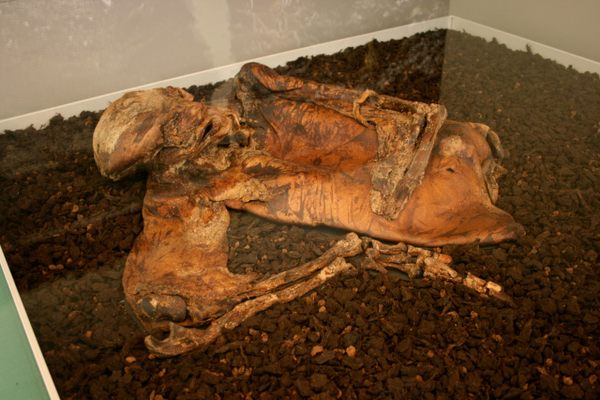About
Sir Francis Bacon once said, “There is nothing more certain in nature that it is impossible for anybody to be utterly annihilated.” Surely this is true for most everything in the universe, but in the case of Lindow Man, it appears to be especially true.
In August 1984, workers cutting through a bog discovered the body of a man who was determined by scientists to have died between 2 B.C. and 199 A.D. The man’s skin, hair, and many of his internal organs had been preserved by the bog, left almost completely intact. He was about 25 years old when he died.
Well-manicured fingernails and a nicely trimmed beard and mustache suggest this man was most probably not involved in intense manual labor. In-depth analysis has revealed that the man's last meal included unleavened bread made from wheat and barley. Because investigations have been able to procure information on his health, appearance, and how he might have died, this find has allowed researchers to learn more about this person than any other prehistoric man found in the United Kingdom.
But no matter what knowledge this find has supplied archeologists with, one thing is certain: Lindow Man suffered an extremely dreadful demise. He was struck on the head (twice, with a heavy object such as an ax, maybe), and received a brutal blow in the back (perhaps from someone’s knee), which broke one of his ribs. Next, a cord was tied around his neck (which may have strangled him or broke his neck). Lastly, his throat was cut, and he was thrown face down into a pool in the bog.
Is Lindow Man proof of a 2,000-year-old homicide or a ritual killing? Some scientists have argued that this man might have been a victim of a human sacrifice carried out by druids.
Related Tags
Know Before You Go
The Lindow Man is occasionally absent while being displayed as part of exhibitions at other national museums or examined by researchers. However, he is part of a permanent collection at the British Museum and can usually be found in gallery "G50/dc26" in the section devoted to British and European history.
Community Contributors
Added By
Published
November 1, 2010














































